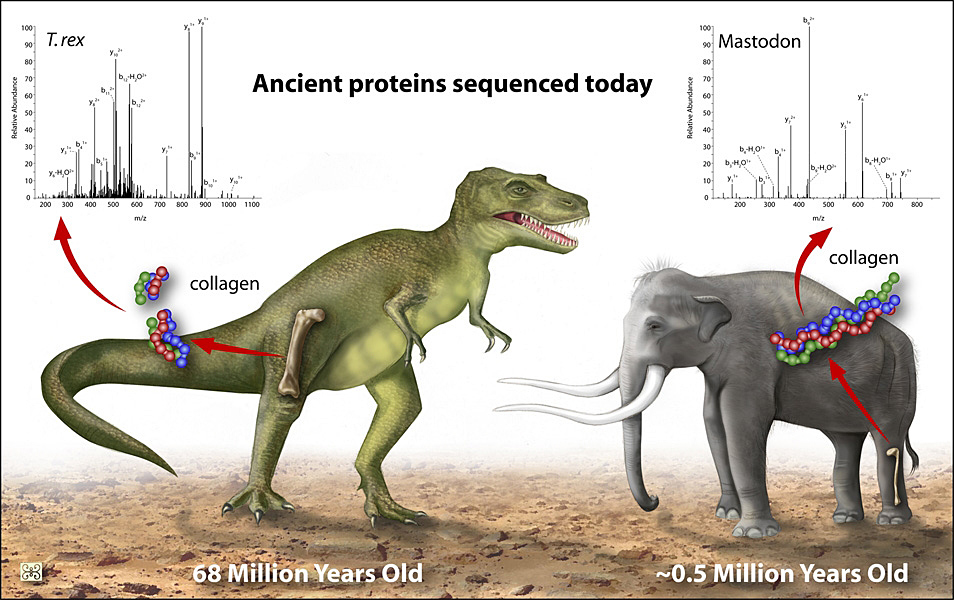Tests of the peptide sequences in T. rex bone fossils have put more meat on the theory that dinosaurs' closest living relatives are modern-day birds.
Molecular analysis, or genetic sequencing, of a 68-million-year-old Tyrannosaurus rex protein from the dinosaur's femur discovered in 2003 by paleontologist John Horner of the Museum of the Rockies confirms that T. rex shares a common ancestry with chickens, ostriches, and to a lesser extent, alligators.
The new research results represent the first use of molecular data to place a non-avian dinosaur in a phylogenetic tree, a "tree of life," that traces the evolution of species.

"These results match predictions made from skeletal anatomy, providing the first molecular evidence for the evolutionary relationships of a non-avian dinosaur," says Science paper co-author Chris Organ, a researcher at Harvard University. "Even though we only had six peptides--just 89 amino acids--from T. rex, we were able to establish these relationships."
The current paper builds on work reported last year. In that paper, a team headed by John Asara and Lewis Cantley, both of Beth Israel Deaconess Medical Center (BIDMC) and Harvard Medical School (HMS), first captured and sequenced tiny pieces of collagen protein from T. rex.
Asara became involved in analysis of the collagen protein because of his expertise in mass spectrometry techniques capable of sequencing minute amounts of protein from human tumors.
For the current work, Organ, Asara and colleagues compared collagen protein from several dozen species. The goal: placing T. rex on the animal kingdom's family tree using molecular evidence.
"Most of the collagen sequence was obtained from protein and genome databases, but we also needed to sequence some critical organisms, including modern alligator and modern ostrich, by mass spectrometry," says Asara.
"We determined that T. rex, in fact, grouped with birds--ostrich and chicken--better than any other organism that we studied," he says. "We also showed that it groups better with birds than modern reptiles, such as alligators and green anole lizards."
While scientists have long suspected that birds, and not more basal reptiles, are dinosaurs' closest living relatives, for years that hypothesis rested largely on morphological similarities in bird and dinosaur skeletons.
The scientists also report that a similar analysis of 160,000- to 600,000-year-old collagen protein sequences derived from a mastodon bone establishes a close phylogenetic relationship between that extinct species and modern elephants.
The research was funded by the National Science Foundation, the National Institutes of Health, the Paul F. Glenn Foundation and the David and Lucile Packard Foundation.
Article: Chris L. Organ, Mary H. Schweitzer, Wenxia Zheng, Lisa M. Freimark, Lewis C. Cantley, John M. Asara, 'Molecular Phylogenetics of Mastodon and Tyrannosaurus rex', Science 25 April 2008: Vol. 320. no. 5875, p. 499 DOI: 10.1126/science.1154284






Comments